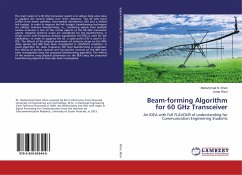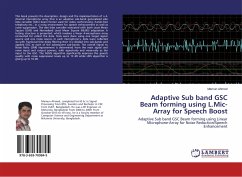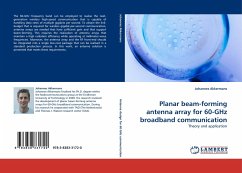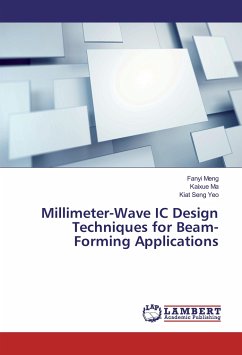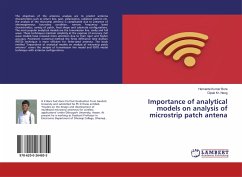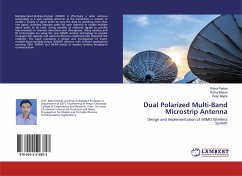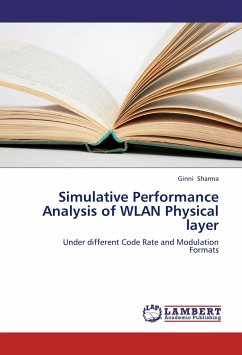
Beam Forming Network For WLAN
Versandkostenfrei!
Versandfertig in 6-10 Tagen
32,99 €
inkl. MwSt.

PAYBACK Punkte
16 °P sammeln!
In recent years, high-speed wireless communication is in vogue. In wireless communication systems, multipath fading, delay and interference occurred by reflection or diffraction. In a high-speed wireless communication, it becomes a necessity to separate desired signal from delay or interference signal. Thus to overcome these problems Smart antenna systems have been developed. Smart antennas employ a set of the radiating elements that are combined to form a movable or switchable beam pattern that follows the desired user. The arrays by themselves are not smart, it is the digital signal processi...
In recent years, high-speed wireless communication is in vogue. In wireless communication systems, multipath fading, delay and interference occurred by reflection or diffraction. In a high-speed wireless communication, it becomes a necessity to separate desired signal from delay or interference signal. Thus to overcome these problems Smart antenna systems have been developed. Smart antennas employ a set of the radiating elements that are combined to form a movable or switchable beam pattern that follows the desired user. The arrays by themselves are not smart, it is the digital signal processing that makes them smart. The process of combining the signals and then focusing the radiation in a particular direction is often referred to as digital beam forming. Smart antennas are most often realized with either switched-beam or fully adaptive array antennas. A smart antenna system consists of an antenna array, associated RF hardware, and a computer controller that changes the array pattern in response to the radio frequency environment, in order to improve the performance of a communication or radar system. In the switched beam system there is the beam forming network



